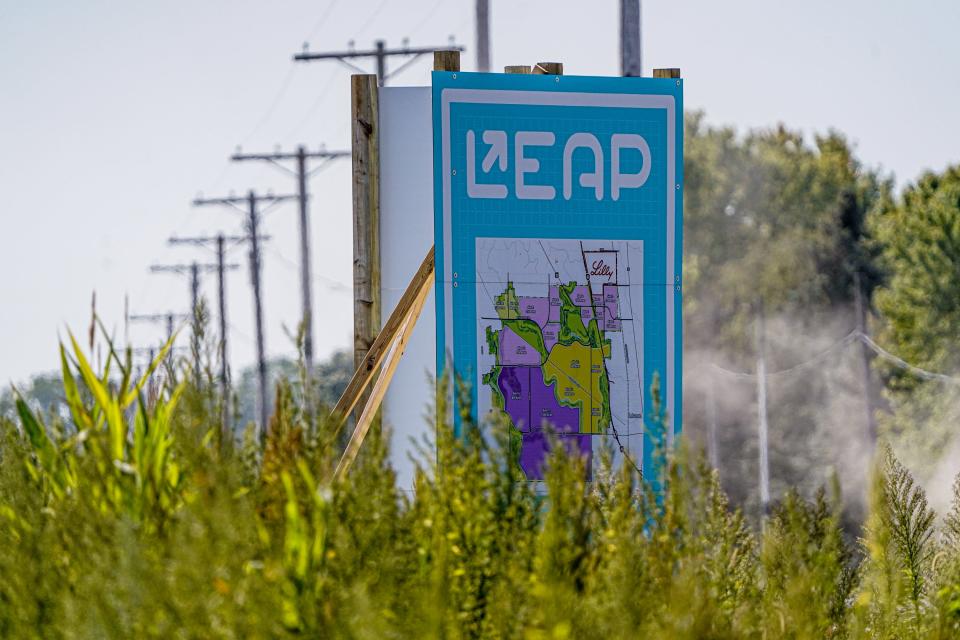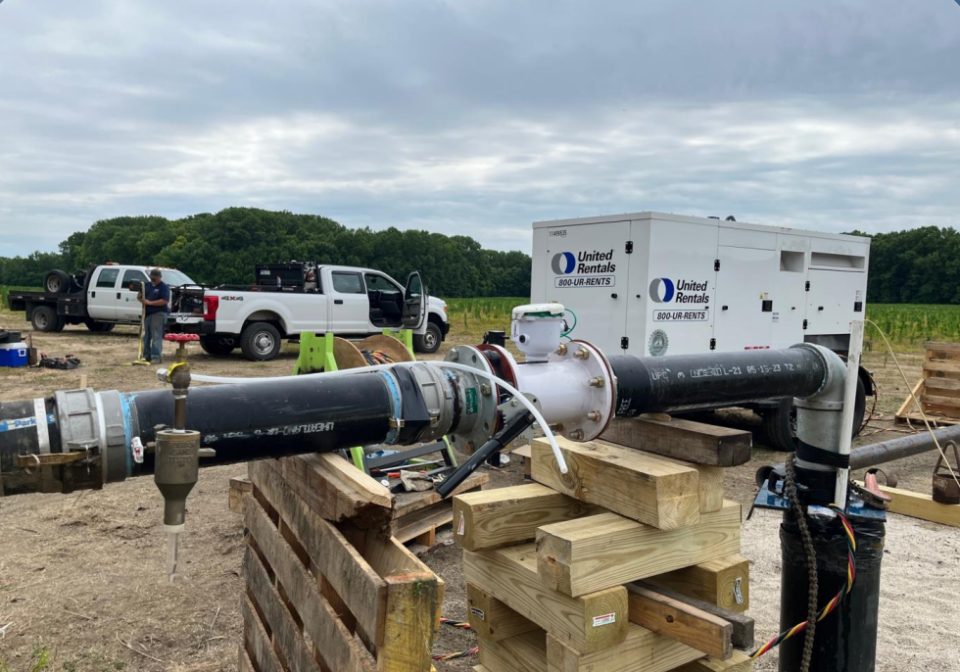Preliminary review: LEAP pipeline won't impact state's water supply or residential wells
Ever since the state announced plans to pipe millions of gallons of water across Central Indiana for a new technology and development district, residents and elected officials have raised questions and concerns.
Will it deplete local water supplies?
Is the plan sustainable in the long term?
Now, officials say they have some answers: Preliminary results from an initial water study suggest there is enough water to make the LEAP project happen.
Earlier this year, the Indiana Economic Development Corporation began working with water consulting firm Intera to study the aquifer along the Wabash River near Lafayette. Meanwhile, working off historic data, the agency signed a $10 million contract for the pipeline's design.
After months of anticipation, IEDC released last month the preliminary results of the study. The final report is not expected until the end of the year.
As for the LEAP pipeline project, here's what you need to know about the study.
What is the LEAP district?
The LEAP district, according to the state, will be a "hub of global innovation." This district — located on more than 9,000 acres in Lebanon and Boone County — is meant to help attract businesses and industry in the high-tech and manufacturing sectors. LEAP stands for Limitless Exploration Advanced Pace.
Eli Lilly has already committed to opening a research and manufacturing campus in the LEAP district. A large semiconductor plant also is eyeing Indiana and the LEAP district, though there have been no other commitments.

Why pump water from 40 miles away?
While Lebanon has a lot of available land, it does not have a lot of is water. A development district of this size and scope needs abundant water.
That's why the state is planning to pipe water from the Wabash Alluvial aquifer near Lafayette nearly 40 miles south to the district. The IEDC said that historic data shows an abundant supply in the aquifer, but it now is studying the water source to ensure its hypothesis is correct.
Future of water: Water isn't only a Western problem. Here's why some Hoosiers are worried about running out
What did the study say?
The results showed that two wells at the site will each sustainably produce more than 15 million gallons per day, or a total of 30 million gallons. Some models suggest the wells could pump even more.
The amount of 100 million gallons has been thrown out as an upper limit. However, that is more representative of the future need of Central Indiana as a whole and not just the LEAP project. The pipeline could be one aspect in helping to meet that overall demand.
The study also found that there will be "minimal impacts on home-owner wells." Larger wells get much of their water from the Wabash River, rather than the aquifer, and shouldn't be impacted.
How did they do the study?
This study focused on a single 70-acre parcel along the Wabash River roughly six miles downstream of West Lafayette. As part of the study, they drilled 17 monitoring wells to measure the water levels of the aquifer.
Intera also drilled and constructed two test wells on the site. Two tests were conducted by pumping each well at a constant rate for 72 hours and water levels were recorded before, during and after each test. This helped determine how pulling water out of the aquifer would impact the water system.

How does the aquifer recharge?
Intera also analyzed how well the river is connected to the aquifer system. According to the preliminary results, "testing showed that water can move easily between the river and the aquifer below."
That is key to the LEAP pipeline being sustainable long-term. The Wabash River flows at more than billion gallons on average each day — with that volume, the river should help recharge the aquifer.
What's next?
More work needs to be done. The preliminary findings apply only to the 70-acre site within the aquifer system. Further study is needed at an additional site to determine a more thorough yield for the project. The expanded and complete study is expected by the end of the year.
The study noted "the results of this effort suggest that more could be done to manage these systems to improve regional water availability."
Call IndyStar reporter Sarah Bowman at 317-444-6129 or email at sarah.bowman@indystar.com. Follow her on Twitter and Facebook: @IndyStarSarah. Connect with IndyStar’s environmental reporters: Join The Scrub on Facebook.
IndyStar's environmental reporting project is made possible through the generous support of the nonprofit Nina Mason Pulliam Charitable Trust.
This article originally appeared on Indianapolis Star: New IEDC study results suggest there is enough water for LEAP pipeline

